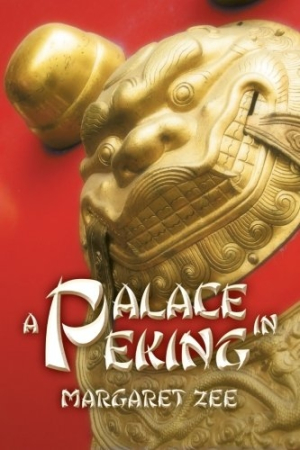A Palace in Peking
With masterful control of language enhanced by rich descriptions, this book should be savored like a fine wine or a smooth sonata.
Filled with period detail and humorous anecdotes, Margaret Zee’s A Palace in Peking features the creative development of an intelligent woman-child juxtaposed with growing political tensions in the Orient. One will experience the environment intensely, while soaking up the atmosphere like a tourist.
An exasperated family sends Daria Krasnova, a precocious thirteen-year-old girl, to live with upper-class friends in 1930s China. In Peking, which is at a glorious cultural peak before war erupts with Japan, Daria falls in love with David Clierce, the son of an American diplomat and scholar. David is a gifted musician who cannot indulge Daria’s adolescent fantasies.
The story is a flashback that spans the course of this young woman’s coming of age, gradually leading to an abiding friendship and, eventually, a romantic interlude. As the book opens, a decade after Daria has said goodbye to David, an official assigned to protect the deserted Clierce residence and what remains of its valuable possessions comes across the heroine in the storeroom as she is attempting to decode her lover’s diary. David is missing in action and presumed dead.
With masterful control of language enhanced by rich descriptions, this book should be savored like a fine wine or a smooth sonata. “Dense summer foliage was like an intolerable burden upon the sweltering earth, barely eased by the faint flux of burning air, on which were wafted in languid eddies over the heat-struck city, the street vendors’ songs. Sunlight struck a hot glare off the patterned windows, and there was a steady wash of heat across the golden-matted floors.”
This work is infused with musical cadence. “The notes, gently, sadly reflective, spoke to her so tenderly like a benediction that grief was transmuted into awe, and she lay listening, nothing but a listener, the trickle of her own emotions totally absorbed into the sea of sound in which she floated.”
The book’s sole weakness is an inconclusive end that sets the stage for an unexpected sequel. This beautiful novel is far from resolved, which is both an exciting lure and a frustrating letdown. Typical of a series in the works, Zee’s novel appears to be the first installment of an ongoing saga, even though it is not promoted as such at the beginning. For those who anticipate reading the next book, this is not a problem. The final pages are enticing.
Zee has invoked her familiarity with the time and setting of her novel, inspired by her Chinese friends and acquaintances. An unusual mix of sophisticated realism and emotional interplay, A Palace in Peking transforms the process of maturing into an evocative and colorful narrative experience.
Reviewed by
Julia Ann Charpentier
Disclosure: This article is not an endorsement, but a review. The publisher of this book provided free copies of the book and paid a small fee to have their book reviewed by a professional reviewer. Foreword Reviews and Clarion Reviews make no guarantee that the publisher will receive a positive review. Foreword Magazine, Inc. is disclosing this in accordance with the Federal Trade Commission’s 16 CFR, Part 255.

